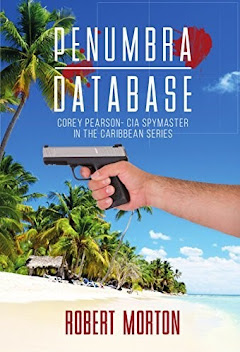 |
| Historic Conch Houses of Key West: The Perfect Cover for a CIA Spy Safe House |
You can’t stroll through Old Town Key West without running into one of those sun-faded, pastel-colored houses with a front porch made for people-watching and sipping something cold. Yeah, those are the famous conch houses. They’re as Key West as roosters in the road and rum in your Coke.
But
here’s the wild part—not all of ’em are just cozy little getaways or Instagram
bait. Some of these old beauties are hiding serious secrets. (Hang tight—we’ll
get to that.)
First, let’s set the scene. Conch houses
aren’t just charming—they’ve got serious history baked into their wood. Most of
them were built in the late 1800s by Bahamian shipbuilders and Cuban laborers
who showed up looking for work, a fresh start, or maybe just some good fishing.
They built these homes out of Dade County pine—tough, dense, practically
bulletproof wood. Locals joke you’d need a jackhammer just to hang a picture.
Sturdy
houses, built by sturdy folks.
Locals say the name “conch house” came
from folks burning conch shells to whip up lime for mortar—that’s what they
used to hold the place together. Others say it just caught on because “conch”
(pronounced konk) turned into a nickname for anyone born and raised on
the island. Either way, the name’s been around so long, it’s part of the
island’s DNA—just like the houses themselves.
Here’s where it gets juicy: In the Corey Pearson – CIA Spymaster Series,
there’s a conch house off the historic Seaport District that isn’t just a piece
of Key West history. It’s a full-on CIA safe house, complete with a basement
“War Room” and a retired general running ops from an Adirondack chair on the
porch. Fiction? Maybe. But in a town where presidents, poets, and pirates once
roamed, who's to say?
Corey walked along a narrow path to the
backyard of the old conch house—what locals called the nineteenth-century homes
built by Cubans, fishermen, and spongers from the Bahamas. They’d burn conch
shells to make lime for mortar, and the name stuck. Perfect for a safe house in
Key West’s historic district. It blended right in.
That’s the magic of conch houses—they
blend in. Quiet. Respectable. The perfect hiding place for…well, whatever needs
hiding.
Of course, Key West isn’t shy about its
brush with fame. Hemingway’s house, just a few blocks off Duval, is one of the
most visited conch homes in the world—complete with six-toed cats and tropical
gardens. But he wasn’t the only big name lounging in a rocking chair around
here. Tennessee Williams had a place. So did Jimmy Buffett. And Harry S. Truman
basically ran a second presidency out of his “Little White House” in the 1940s.
If these walls could talk, they’d probably be told to shut up for national security
reasons.
Some conch houses have been modernized
with AC, pools, and smart-home tech. Others still have their original woodwork
and funky tile floors. But the bones are the same—strong, quiet, unassuming.
Exactly the kind of place you'd expect to find a secret operation humming
beneath the surface.
The War Room, buried deep beneath an old
conch house in Key West, had the feel of a pressure cooker about to blow.
General Morrison sat alone at the head of a long, scuffed-up table, his eyes
locked on a glowing world map projected on the wall behind him…
That’s the vibe down here. One minute
you’re sipping Cuban coffee and watching the sunset at Mallory Square. The
next, you’re wondering if the guy reading the Key West Citizen at the
next table used to topple dictators for a living.
There are supposedly six CIA safe
houses on the island, according to the Corey Pearson – CIA Spymaster
Series. And one of them is disguised so perfectly, you'd walk past
it a hundred times without a second thought.
General Morrison hung up his secure
cellphone after getting word about the arrests. Rising from his Adirondack
chair on the front porch of the CIA safe house in Key West, he headed inside...
Behind it was the "War Room," Langley’s hidden bunker in the
basement.
And that’s just it—Key West isn’t just a
beachy, boozy, sun-kissed island. It’s layered. Deep. A little salty, a little
sweet. A perfect place for old secrets and new stories.
So next time you’re strolling past a conch
house with peeling paint and wind chimes on the porch, take a second look.
Maybe it’s just a beautiful relic of the past.
Or maybe, just maybe... someone inside is
watching the world burn—one red blinking dot at a time.
Robert
Morton is a member of the Association of Former Intelligence
Officers (AFIO) and writes about the U.S. Intelligence Community (IC). He also
writes the Corey
Pearson- CIA Spymaster Series, which blends his knowledge
of real-life intelligence operations with gripping fictional storytelling. His
thrillers reveal the shadowy world of covert missions and betrayal with
striking realism.






No comments:
Post a Comment